Among the many natural medicines, the fungus mushroom stands out for its therapeutic efficacy. This representative of forest flora is distributed from Europe to the Far East, preferring mixed or deciduous forests. Its scientific name is Phallus impudicus. Because of its external signs and unusual properties, this exotic mushroom is popularly called stinky morel, immodest phallus, shame, panna, witch's egg.
These "gifts of the forest" can be eaten, but they are more valued because of the healing properties. Tinctures, ointments, particles of the fungus are used to treat diseases of the digestive system, heart, blood vessels and joints. Veselka well helps with burns, frostbite, effectively counteracts oncological pathologies.
Content
- 1 The characteristic features of the fungus
- 2 Species diversity
- 3 Collection rules
- 4 The main differences from false, inedible mushrooms
- 5 The use of the fungus in the treatment of oncology and other diseases
- 6 Prescriptions and features of the use of drugs
- 7 Reviews on the benefits of fun
- 8 Answers to Common Questions
The characteristic features of the fungus
Common Veselka is most often found from May to October in forests with soil rich in humus. The mushroom grows both singly and in groups. Its spores are mainly spread by insects. An amazing feature of this species is that the panna never lives in the same place for two years in a row. The shramnik does not grow more than a goose egg. In the early stages of its development, this mushroom in shape resembles a plum with gelatinous pulp.
A week later, a kidney appears from his egg-shaped body, which begins to grow rapidly, turning into a fruit stem. The fungus is a champion among all mushrooms in terms of body formation speed. Leg with a hat in some cases grow in 20 minutes.
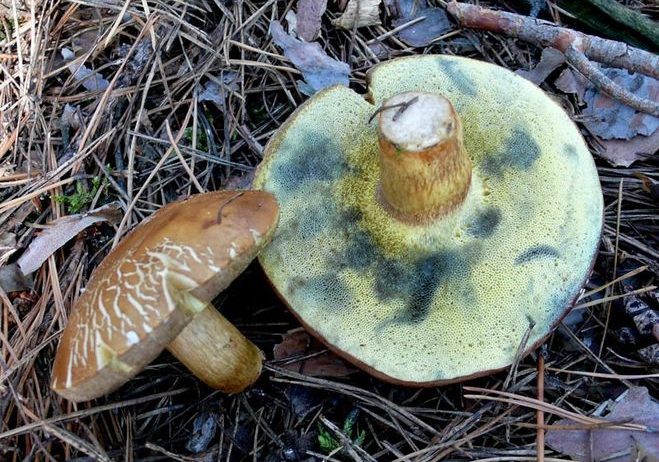 You may be interested in:
You may be interested in:Appearance and photo
The fun looks pretty unusual: at the beginning of his life, a young mushroom looks like an egg that lies on the ground. The photo shows the fruiting body of a young specimen.
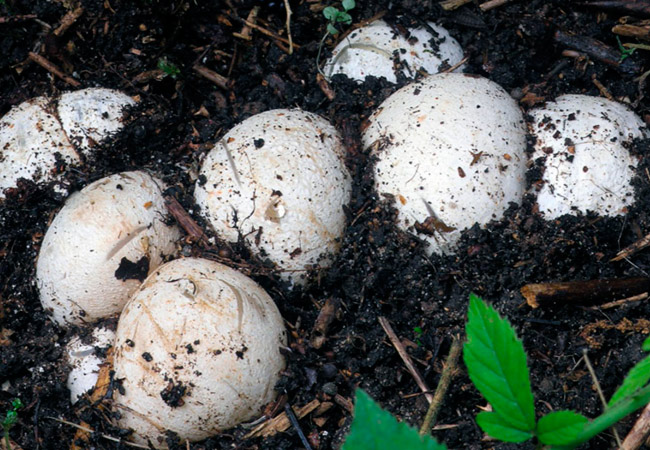
Under its outer shell of a yellowish color hides the fruiting body in the form of the embryo of an adult fungus. At a certain time, the shell opens, breaking into three petals. After this, the fungus begins intensive growth, reaching a height of 20 cm.
Its hat increases in diameter up to 6 cm, and the stalk - up to 4 cm. In an adult fetus, the mucous hat has an oblong shape with small holes. It is located on a hollow leg.
Initially, young representatives do not smell at all, but as they grow, they are saturated with an unpleasant putrefactive aroma, which serves as a bait for insects that carry fungal spores.
Morphology (species differences)
Unlike most mushrooms, the fungus resembles an egg in shape, covered with a cream-colored peridium. If you cut this smooth outer shell, then inside you can find a jelly-like mass with a strong unpleasant odor. In this environment, the fruit body is placed, reaching a diameter of 6 cm.
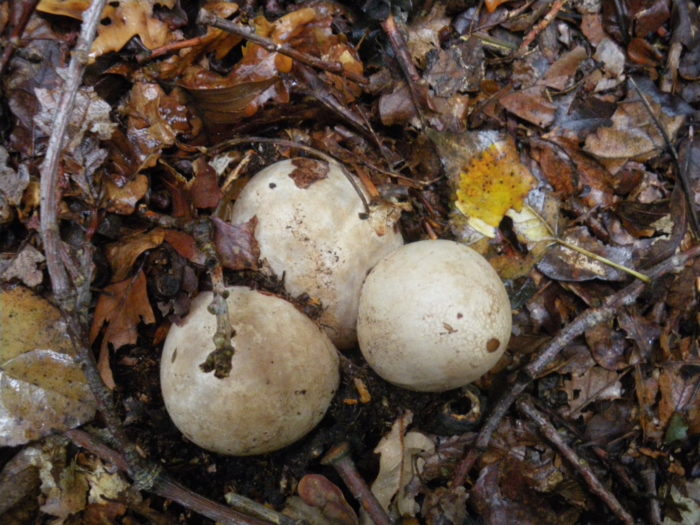
At a certain stage of ripening, the “shell” breaks and an outward appearance appears that looks like a leg covered with a mucous hat.Its surface is as if dotted with yellow spores, emitting a sharp putrefactive odor that attracts insects within a radius of 50 meters. Having escaped to freedom, the mushroom begins to very quickly increase in size.
Habitat
Especially active is growing fun in Russia, in particular, in Siberia, the North Caucasus and the Far East. The mushroom loves deciduous, mixed forests with moist fertile soil. At the foot of centuries-old oaks, beeches, among shrubs, alder, lingonberries, this species feels most comfortable.
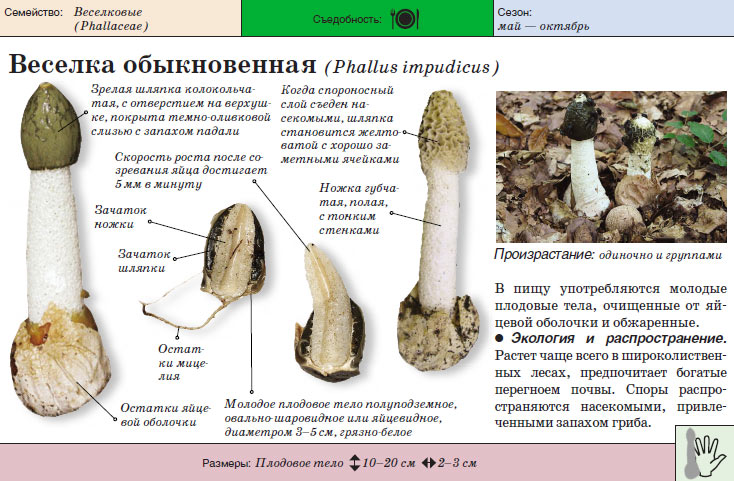
Due to its medicinal properties, such gifts of nature in some countries are considered a national treasure. Shramnik grows in small colonies or separately on humus-saturated soil. Despite the widespread distribution, finding a “witch's egg” is quite difficult.
 You may be interested in:
You may be interested in:Edibility
Young specimens are suitable for eating. At the egg stage of development, the fungus can be fried directly in the shell. Peeled fruits are often used to make soups, caviar, stewed as part of vegetable stew. In addition, after preliminary drying and grinding, the mushroom mass is used in the form of seasoning. Despite its edibility, this species is more valued as an effective cure for serious diseases.
Species diversity
Representatives of the genus Veselka often appear in regions with a temperate or warm climate. Despite the fact that they all belong to different families, the description of their life cycle and external signs coincides.
The most common are the following types:
- The toga-clad mushroom is distinguished by an openwork mesh of various lengths designed to attract more insects.
- A net-bearing species with large mesh cells, which is most common in Southeast Asia.
- Reddish tropical fun, which is found in the Primorsky Territory.
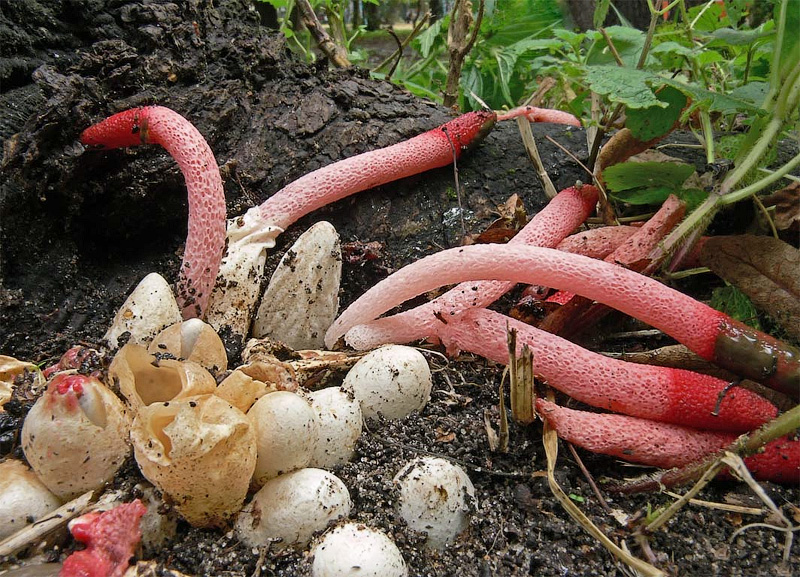
Tropical fun - Mutinus of Ravenella sprouts from a hollow pinkish-colored egg with a reddish seal on the end.
- Dog mutinus is characterized by the fact that after cleansing the mucus by insects from the hat, it acquires an orange color.
- Kobayyashiya Japanese, leading an underground way of life. The egg of such a fungus does not burst, and spores develop inside.
- Red grate originally from the Mediterranean.
- Javanese floriculture, which is widespread in the southern regions of the Asian and European parts of Russia.
Collection rules
When collecting mushrooms for therapeutic purposes, it is important to select specimens at the right stage of their development. It is believed that the most effective medicinal material in the treatment of cancer is fun at the egg stage. For the treatment of gastrointestinal pathologies, already discovered mushrooms are used.
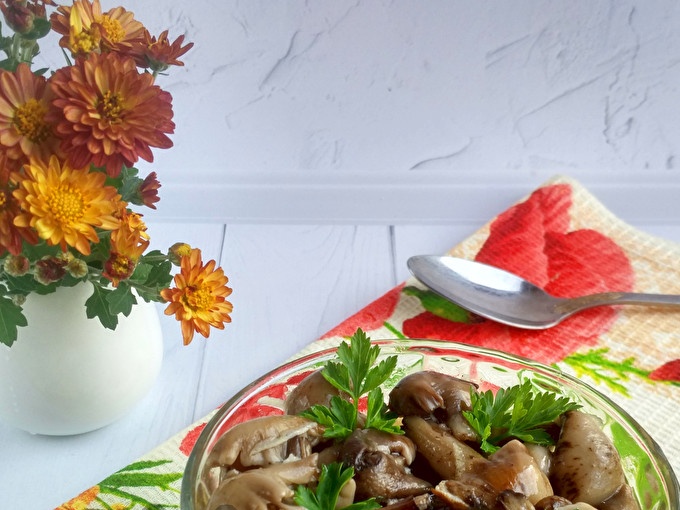 You may be interested in:
You may be interested in:It is easy to identify a mature mushroom, because in shape it resembles a male genital organ. The most effective are characterized by mushroom eggs, which are almost ready for disclosure. You can determine them by probing a solid bud under the peel.
Young copies are perfect for preparing various dishes. It is necessary to cut off the oars with special care, being careful not to trample the soil in this place.Otherwise, these rare representatives of the forest flora may disappear in familiar places.
The main differences from false, inedible mushrooms
Morel false (funky ordinary) outwardly strongly resembles noble morels, so mature mushrooms must be distinguished from real morels. They have the following distinctive features:
- growth features: the fungus grows from an egg, and morel directly from the ground;
- the presence of mucus: this sign distinguishes only a false mushroom in a mature state;
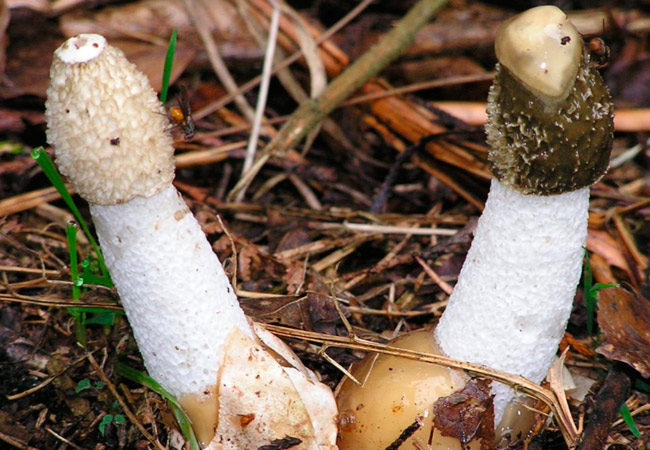
Morel is false - hat coloring: in comparison with a dark olive panna hat, a noble morel can have a yellow or brown color;
- the smell of a mature mushroom: unlike the stinky morel, the true specimen exudes a rather pleasant aroma, since it does not need to attract insects.
Thus, the main features, external signs of funnels will help distinguish this mushroom from similar specimens.
The use of the fungus in the treatment of oncology and other diseases
Veselka is characterized by pronounced healing properties, therefore it is used as a raw material for the manufacture of various medications. Now fungotherapy with this fungus is becoming increasingly popular.
Healing properties
Since ancient times, this species has been used to treat gout, arthrosis and digestive system diseases. At present, panna has gained widespread use in the treatment of many other pathologies. Phytoncides in its composition actively counteract the viruses of influenza, hepatitis, herpes.
This mushroom has the following medicinal properties:
- removes cholesterol;
- lowers blood pressure;
- kills dangerous AIDS viruses;
- treats malignant tumors of various etiologies and gastrointestinal ulcers;
- has a therapeutic effect on the kidneys;
- heals wounds, burns, frostbite;
- helps with rheumatism, arthritis, gout, varicose veins;
- eliminates swelling, irritation, prevents the development of allergies;
- increases potency.
Contraindications
Despite the fact that these mushroom preparations can be combined with various medications, care must be taken when using them, since an overdose can cause the death of hair follicles in men, and baldness.
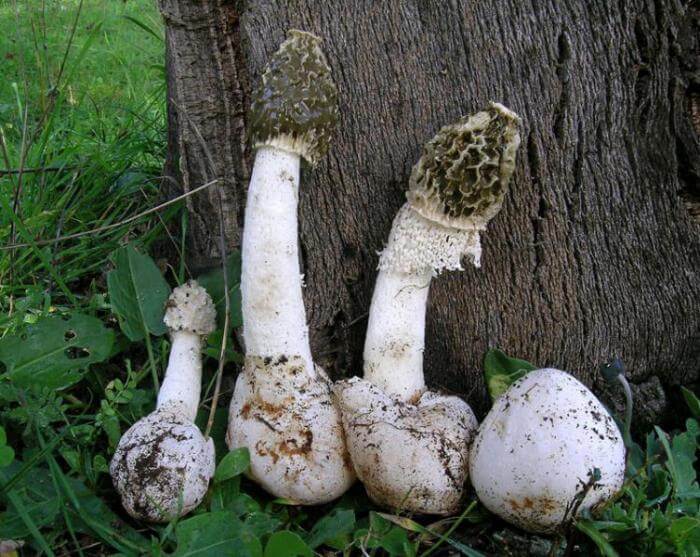
In addition, these medicines have the following contraindications:
- increased individual sensitivity, intolerance;
- pregnancy;
- lactation;
- childhood.
In general, the fungus is considered harmless. Only in some cases, its use can cause digestive disorders, bloating, nausea.
Prescriptions and features of the use of drugs
Periodic use of funkit helps rejuvenate the body. This product has proven to be effective as a therapeutic agent. For therapy and prevention, the following forms of the fungus are used:
- water tincture as an effective remedy for high cholesterol, stomach diseases;
- dried mushroom material to strengthen immunity;
- fresh mushrooms - the best option for the prevention of cancer;
- universal alcohol preparations.
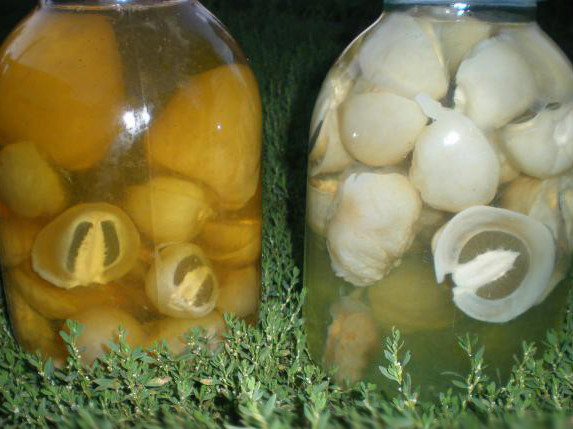
Basic recipes:
- For alcohol tinctures, you need 250 ml of alcohol and mushrooms in the dried state. This mixture should be infused for two weeks. To strengthen the immune system, it is recommended to use this medicine for 1 tbsp. spoon three times a day. Diabetics and people with problematic "thyroid" have enough daily dose equivalent to the volume of 1 teaspoon, which must be taken for 3 months. Twice a day before meals, it will be useful to take the drug for people who suffer from cardiac pathologies.
- For therapeutic purposes, a jelly-like mass of egg mushroom is also used.With its help, they fight wrinkles, skin allergies. This substance is applied to the skin and washed off after 15 minutes.
Reviews on the benefits of fun
People taking mushroom
Elena, 52 years old: “I've been using fun in the form of tincture for almost a year now. This unusually healing mushroom radically lowered my prohibitively high blood pressure. I take the medicine myself made one hour before eating 1 teaspoon twice a day. To prepare the tincture, you need to mix alcohol and mushrooms in equal proportions and let the mixture brew for two weeks. ”
Alexey, 60 years old: “Since childhood, he suffered from respiratory diseases. At the initiative of his wife, he tried a medicine from a panna mushroom. For its preparation used mushrooms, vodka, honey. Everything is mixed in equal proportions and infused for a month. I managed to overcome the disease after I started taking tincture of 1 teaspoon daily. ”
Doctors
On the therapeutic effect of the fungus fungus speak reviews of doctors specializing in oncology:
Kaverin I.S., oncologist: “A twenty-year-old patient was diagnosed with lung cancer. Due to the ineffectiveness of treatment, the patient was sent home. His mother began to treat the disease with the help of tincture of fun. In addition, various herbal infusions were used. After some time, there was a positive trend and the patient’s faith in recovery. ”
Answers to Common Questions
Veselka is an edible mushroom, widely used in folk medicine. Drugs based on it have proven effective in the treatment and prevention of many diseases.

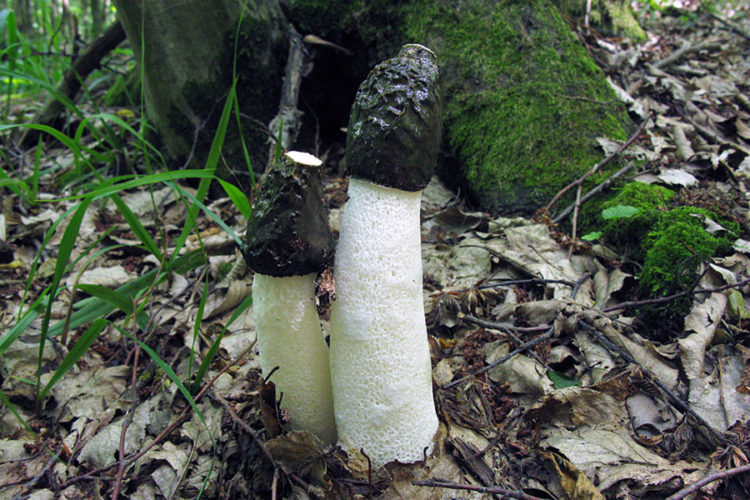
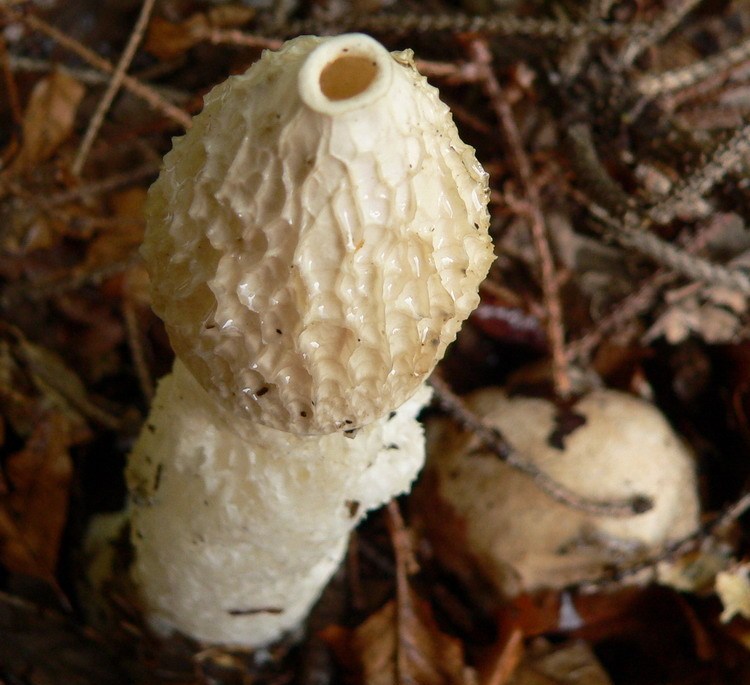
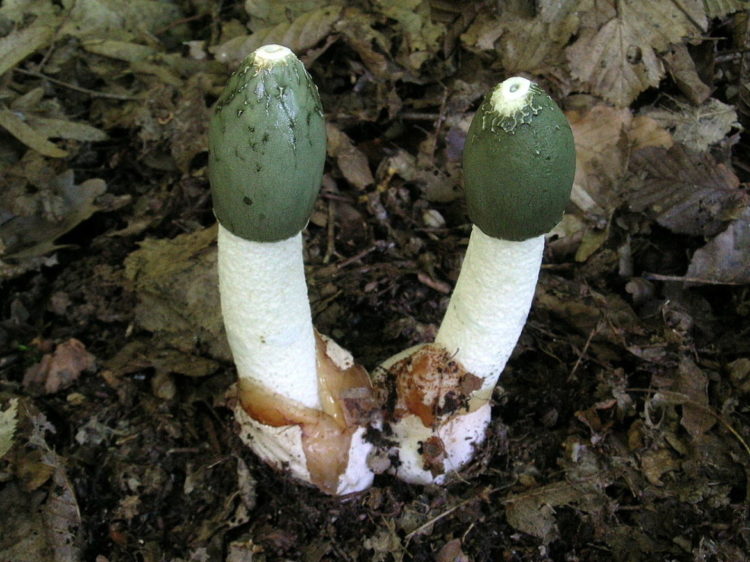
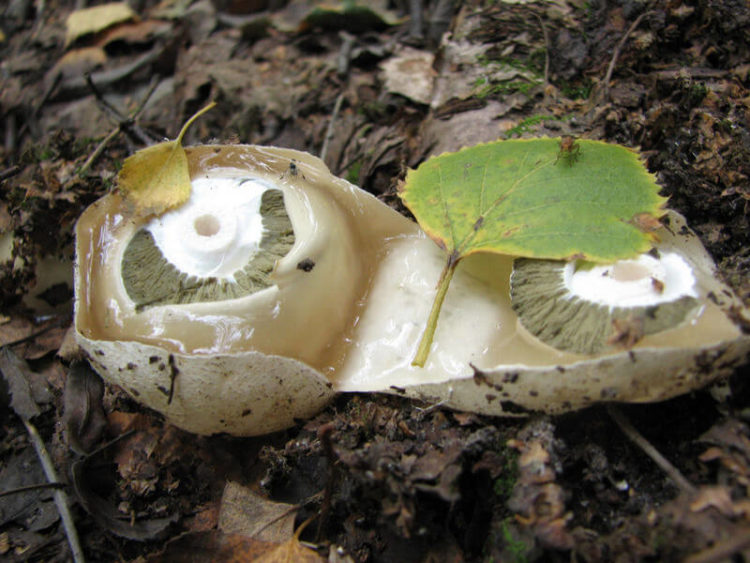
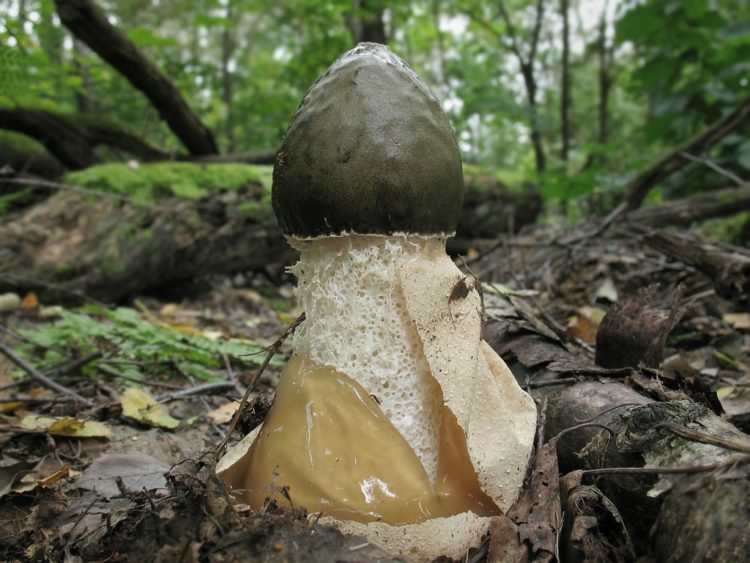
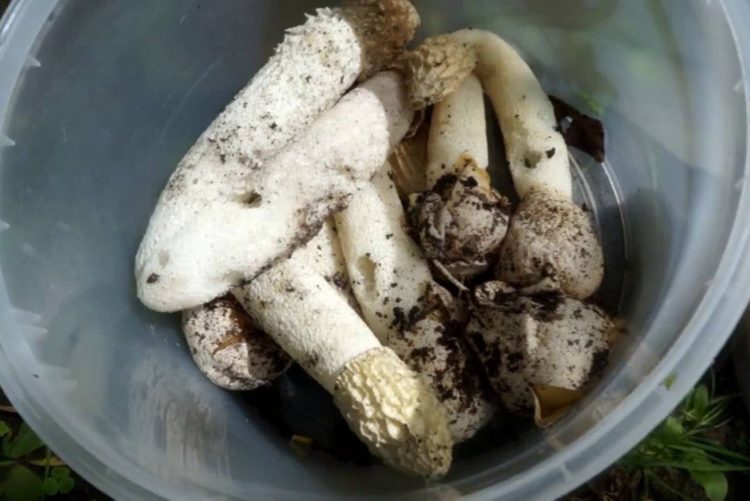
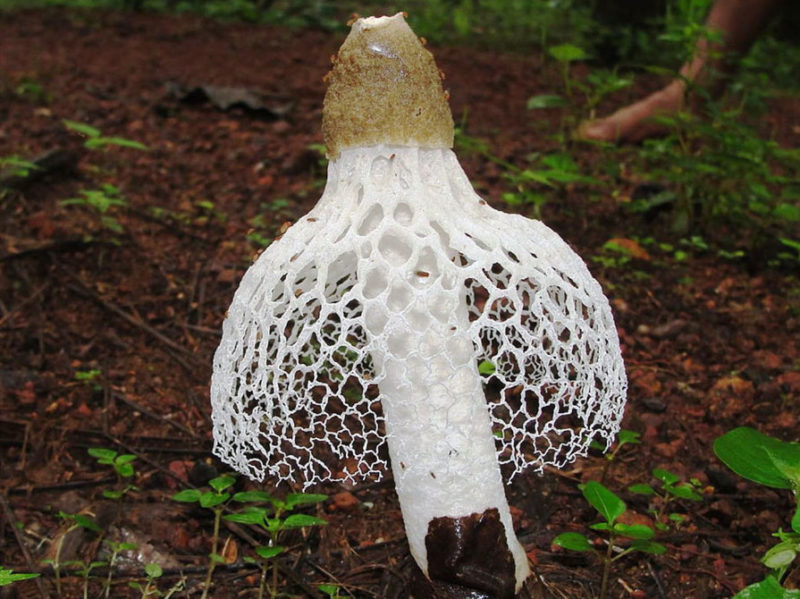
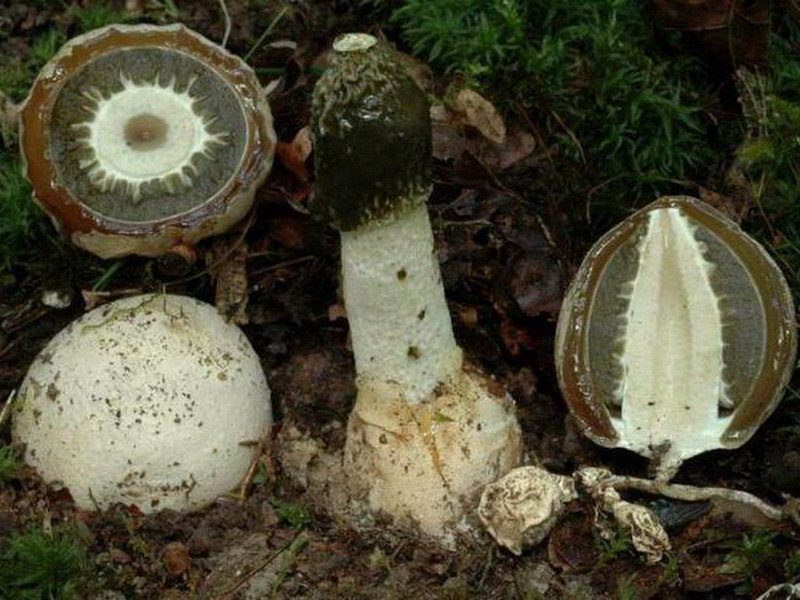
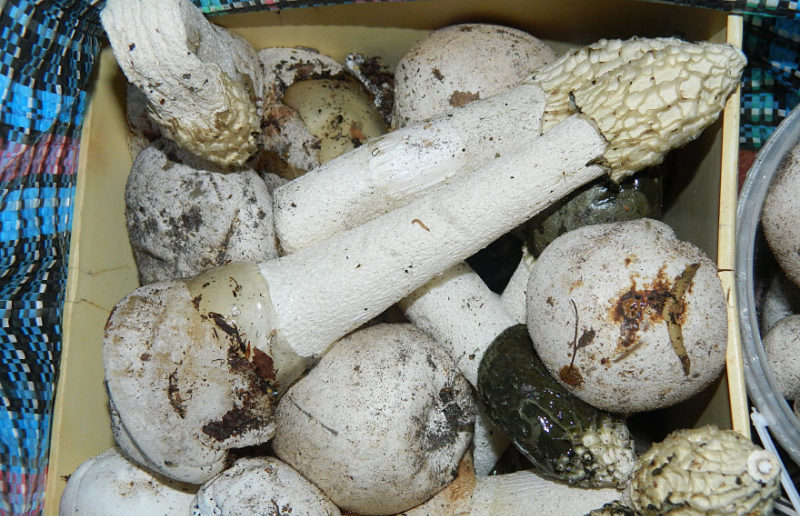



 Care and use of Kombucha at home (+22 photo)
Care and use of Kombucha at home (+22 photo) Edibility of the fungus of the motley umbrella and its description (+19 photo)
Edibility of the fungus of the motley umbrella and its description (+19 photo) Description of edible and inedible oils, their poisonous counterparts (+40 photos)
Description of edible and inedible oils, their poisonous counterparts (+40 photos) Useful properties of milk mushroom and its contraindications (+17 photos)
Useful properties of milk mushroom and its contraindications (+17 photos)
Tatyana
Thanks for the interesting and useful article. The fact is that to me in the country they grow every year (red) and always in the same places. Always considered them toadstools. Thanks again.